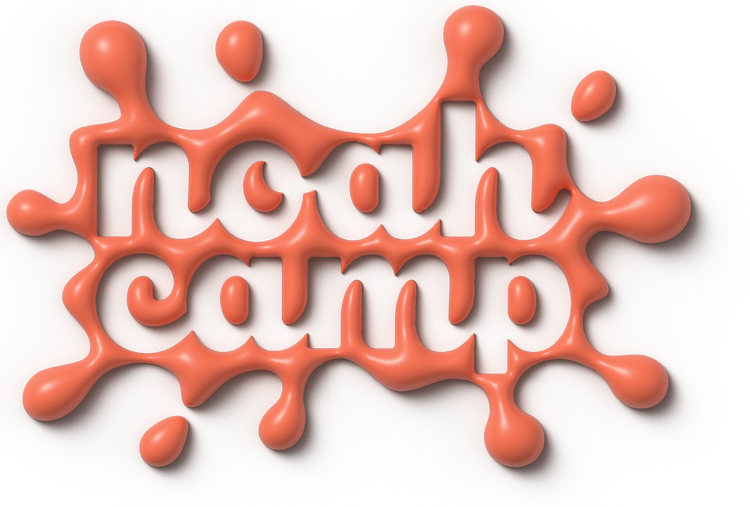LetterHack: Stippling Gradient Effect on Your Lettering
We are trying to create this faux reflection look on our lettering using a stippling gradient. This is otherwise known as pointillism. You can draw this out in pencil and then go over with stippling, but I have a much faster way to create the same thing without losing the organic look of the original brush lettering.
STEP 1: CREATE LETTERING AS USUAL
1) First, letter as usual. I am using the Sharpie Brush tip Marker. Brushletter your word or words with a thick brushpen or marker. This effect will be easier and look better with thicker lettering, making more surface area to play with.
STEP 2: CREATE GUIDELINES
2) Create guidelines with a pencil and ruler in the horizontal center of the word. The location of your lines can vary upon your preference, but make sure to leave enough space for the stipple fade in and out effect.
STEP 3: PLACE TRACING PAPER OVER YOUR LETTERING AND TAPE DOWN
3) Place vellum paper or tracing paper over your paper, and tape it down with scotch tape. I use Grafix 30 lb vellum paper for this. You don't need the paper and tracing paper to match up, so you can tape anywhere above the lettering. The tape will keep the paper still when you start tracing the design.
STEP 4: START COLORING ABOVE AND BELOW THE GUIDELINES
4) Start coloring above and below the pencil guidelines by tracing the word. I like to start with the outline first, and then color the rest in. I use a Micron 08 for this.
STEP 5: COLOR IN THE REST UP TO THE LINES
5) Color in the rest of the top and bottom. I like to use the Micron 08 for close to the outlines, and then I go over any missing spots with a Pigma graphic 2 chisel tip pen.
STEP 6: START FIRST LAYER OF STIPPLING
6) Now that the top and bottom are colored in, it’s time to stipple. Stippling is an art in itself, and requires patience and practice to improve. The main idea of creating this gradient is to keep your dots very close together towards the solid part (dark part), and make them further and further apart towards the middle (the light reflection). Keep your pen completely vertical while hitting the paper lightly. This keeps the dots even and round. My first layer of stippling is made of dots that are extremely close together.
STEP 7: FINISH THE FADE EFFECT WITH A SMALLER TIP
7) I use the Micron 005 to finish the stippling fade effect. Space out the dots more. Try to make the fade as smooth a transition as possible. If you are having trouble with this, you may need to just practice stippling a bit more.
8) Place a piece of white paper behind your creation and see what you've made. With the paper behind the trace, you can see anything you might have missed. Finish the details and you're done!
HAVE FUN WITH THIS!
Show me what you've made with this tutorial and show me on Instagram or Facebook @LetteringCamp. I can't wait to see what you come up with!









